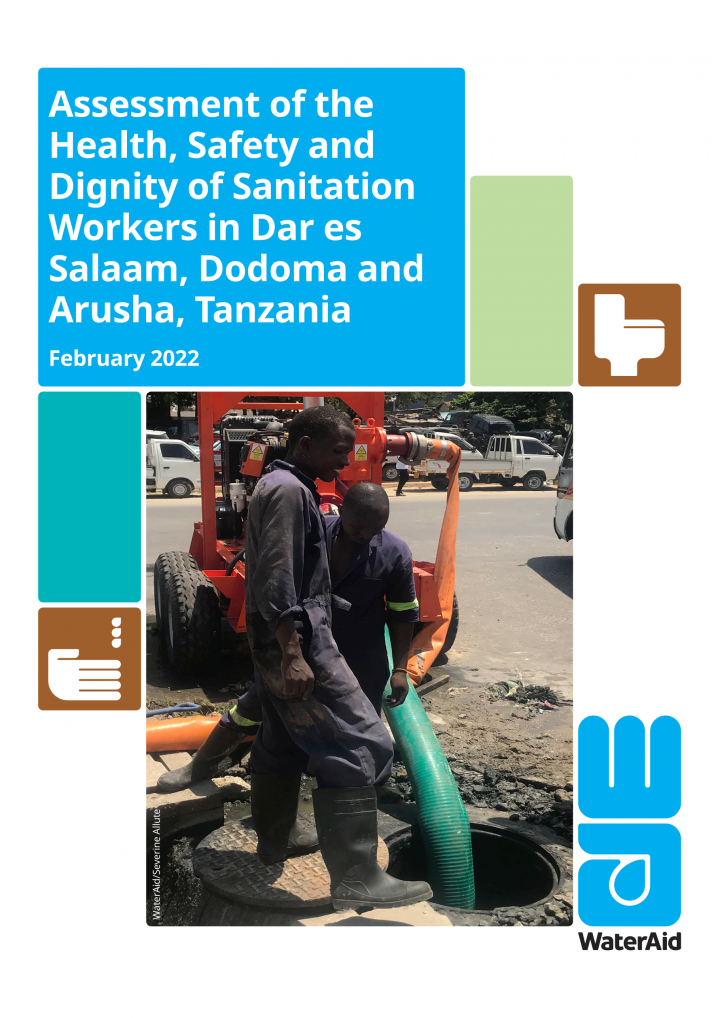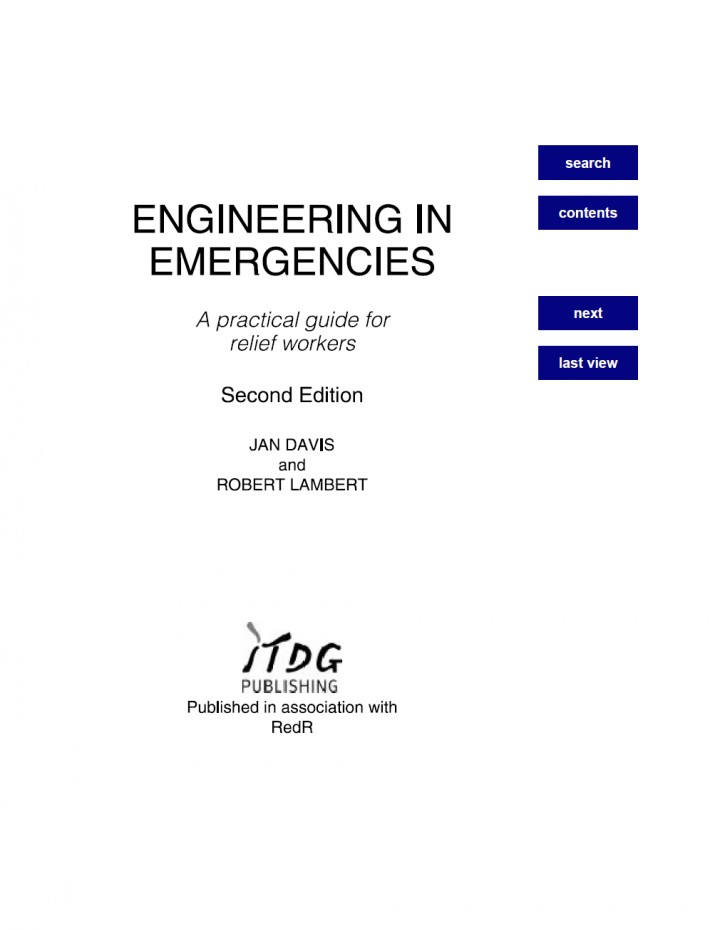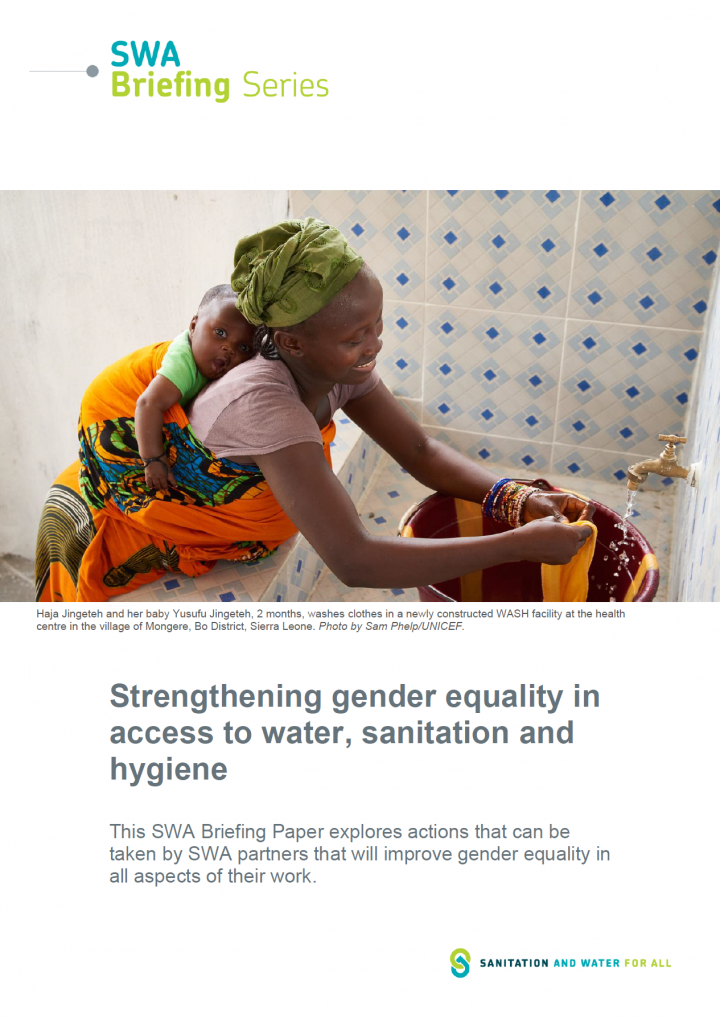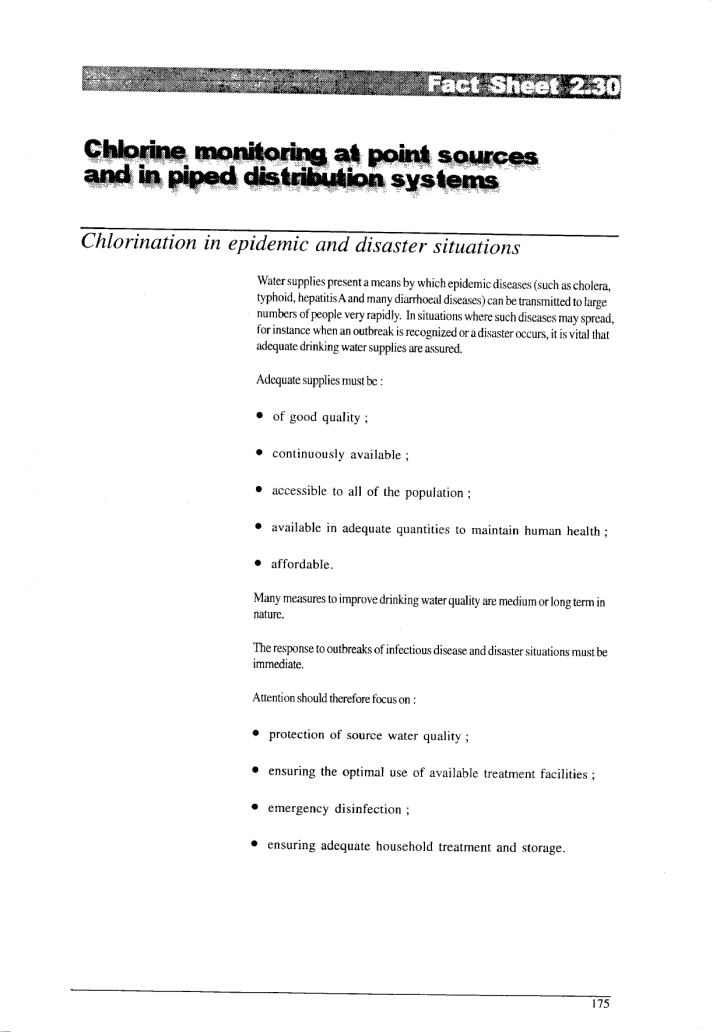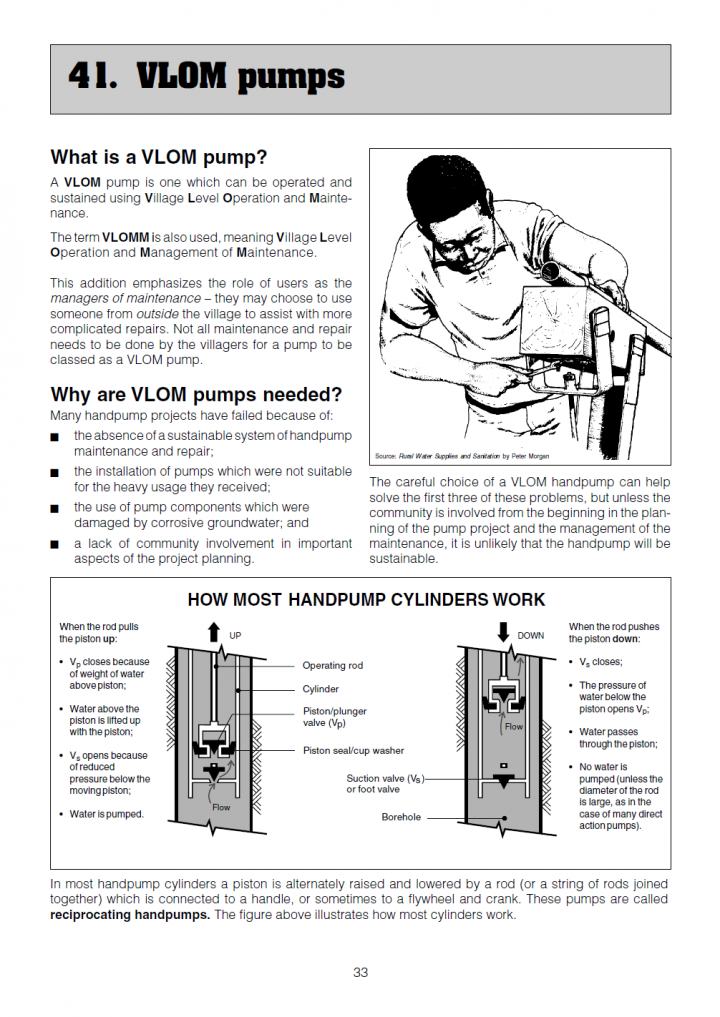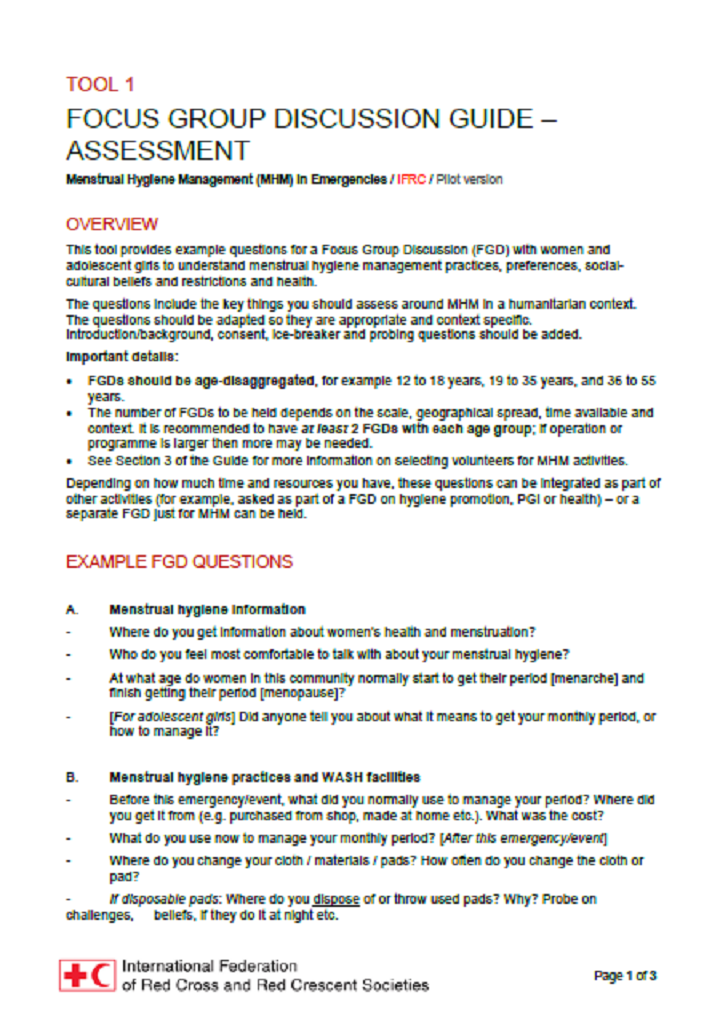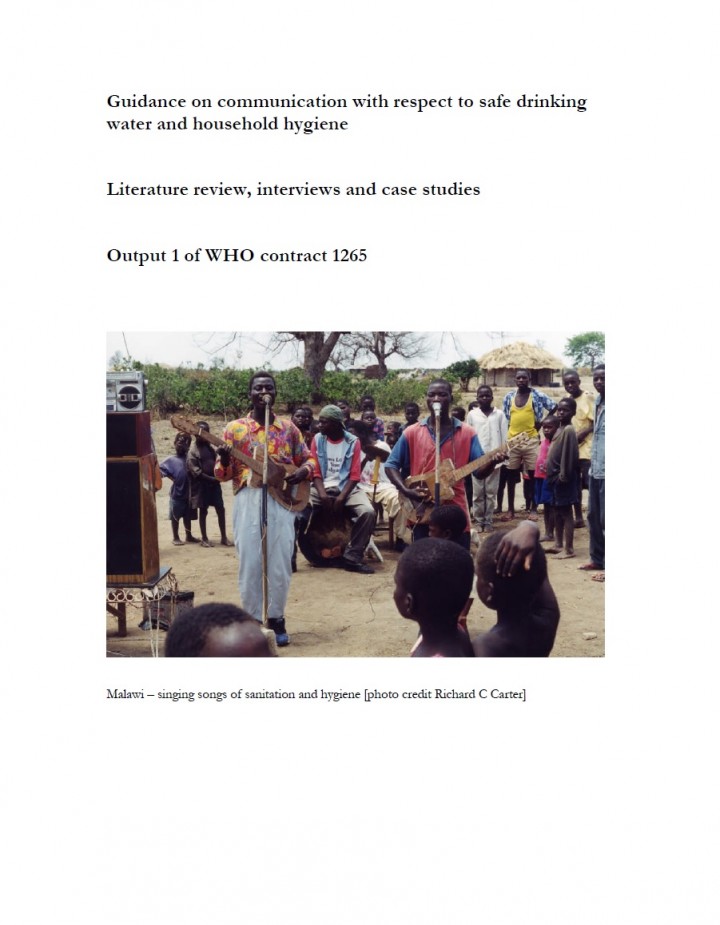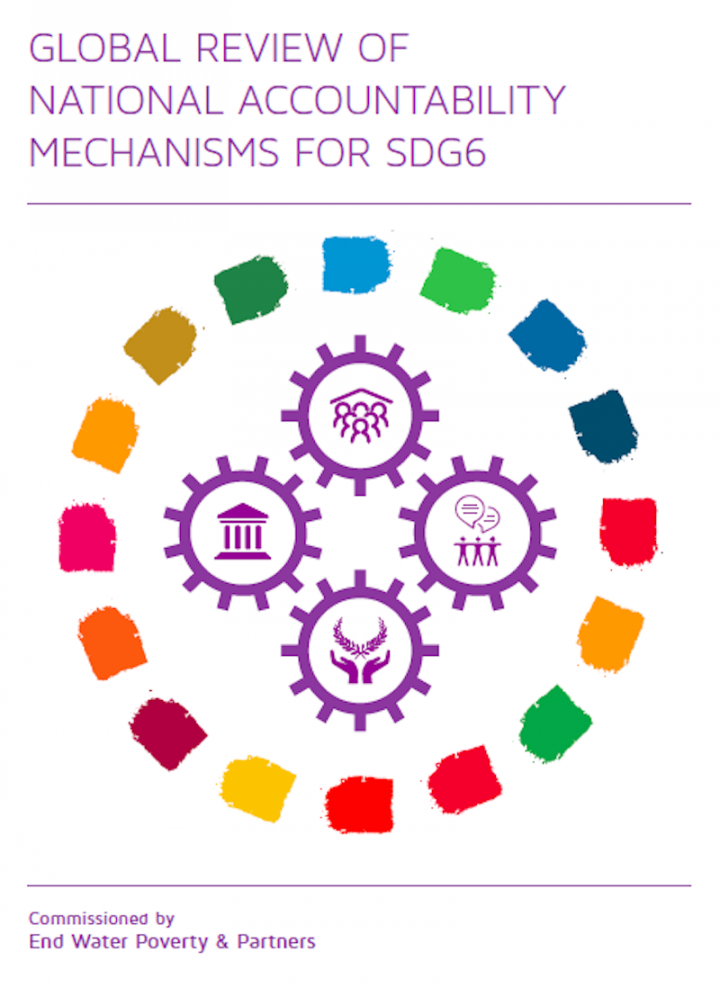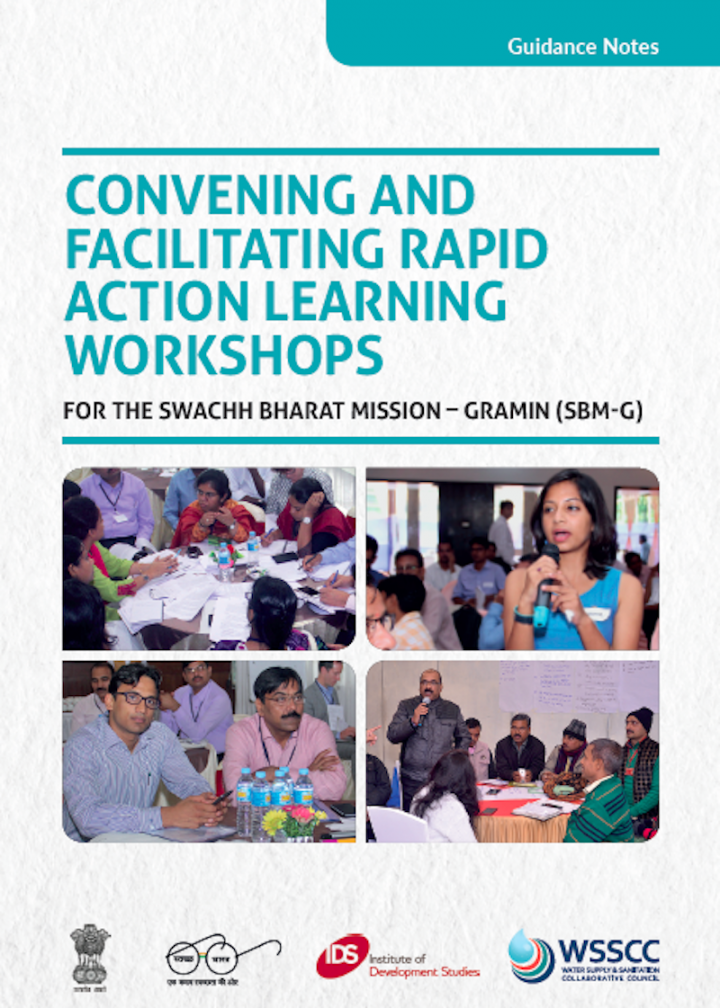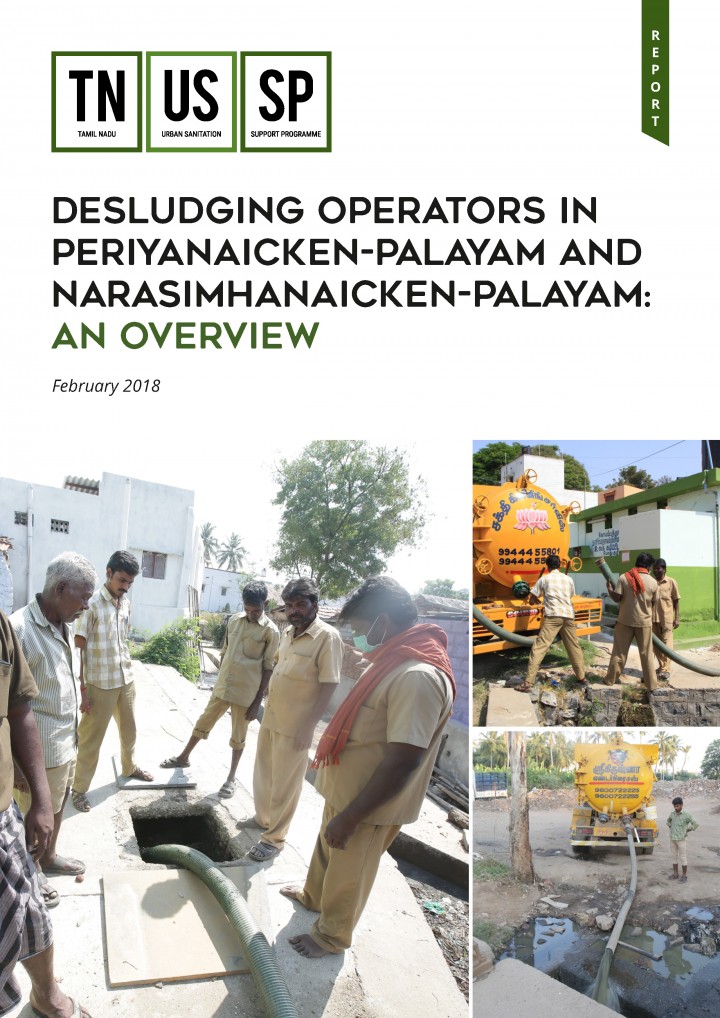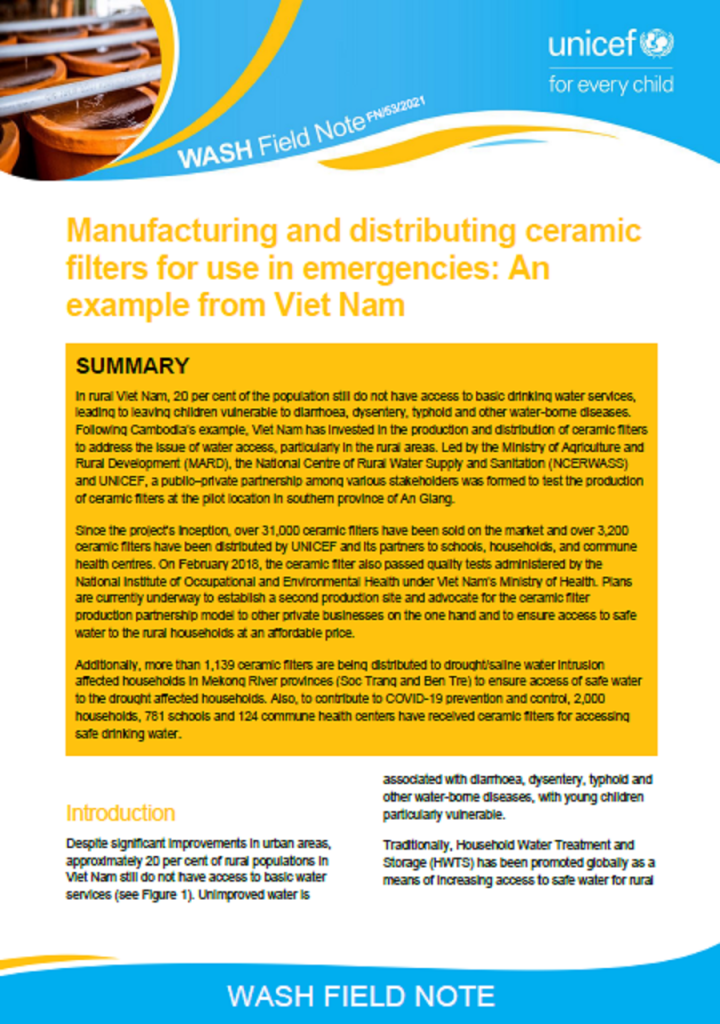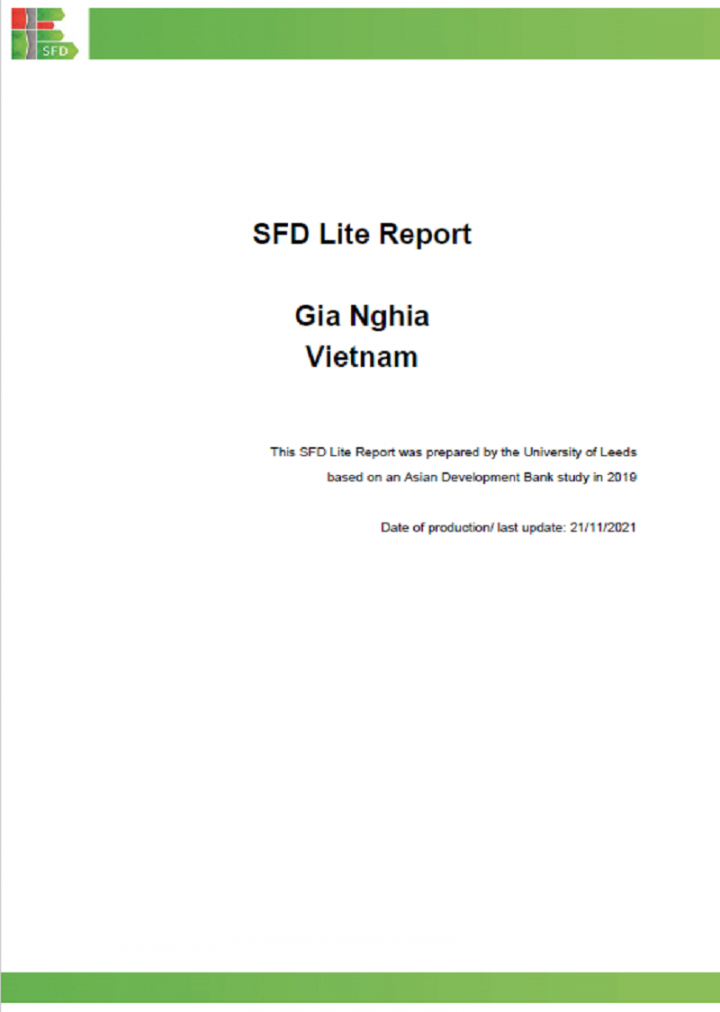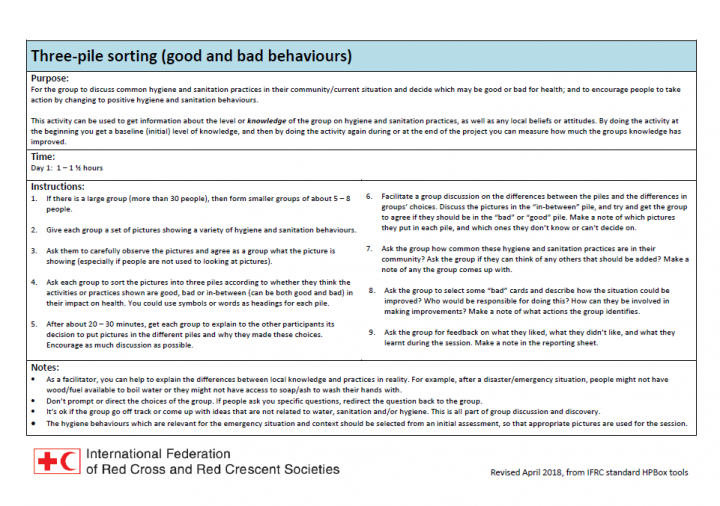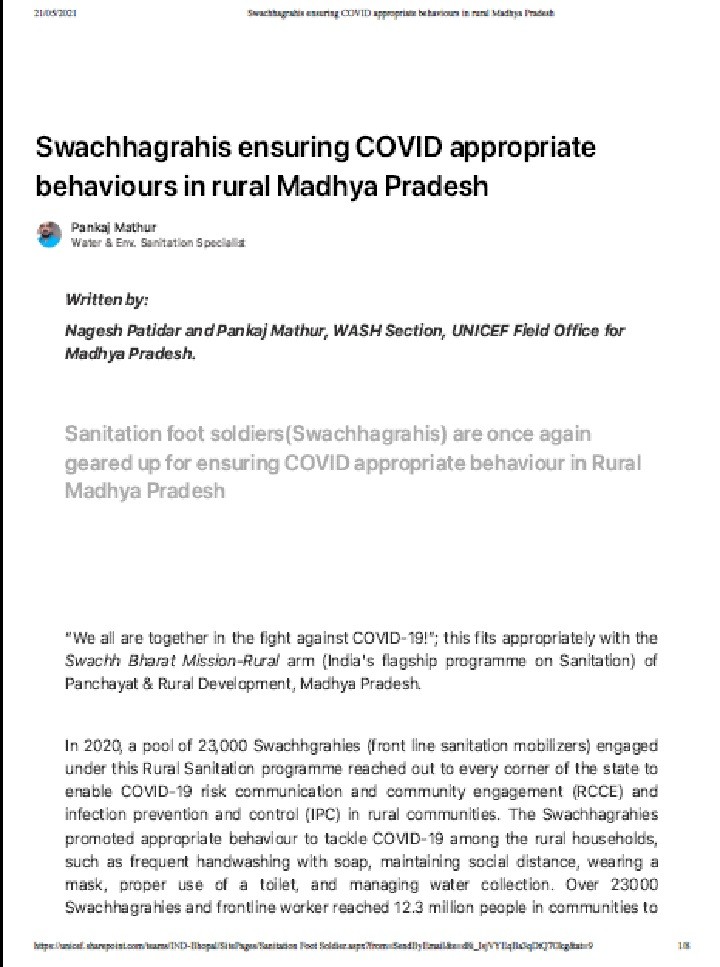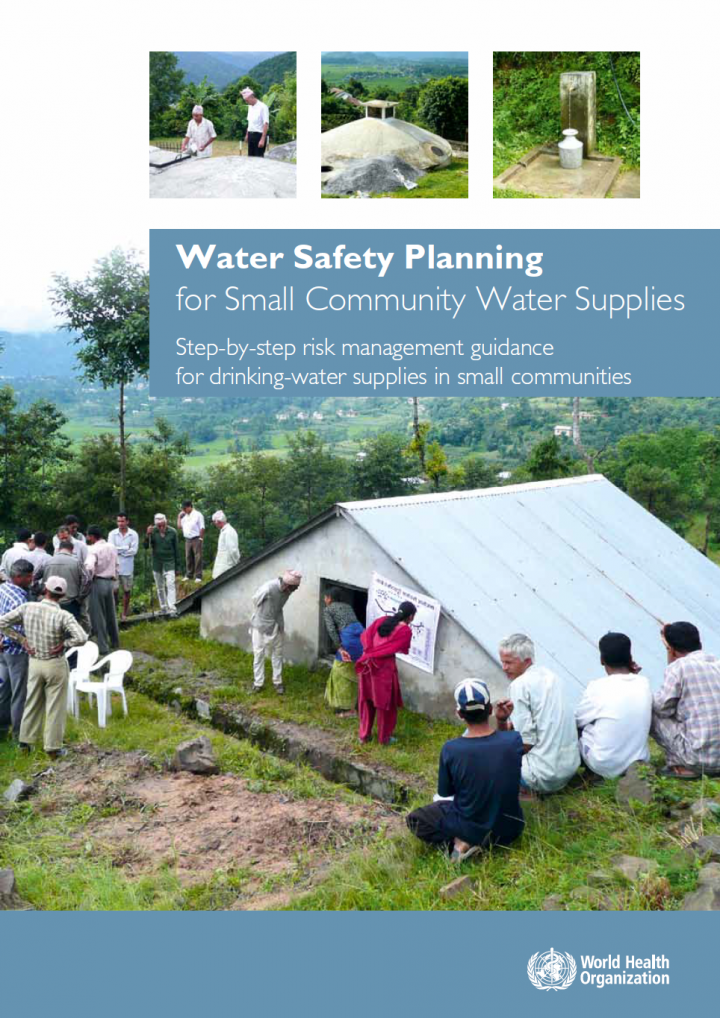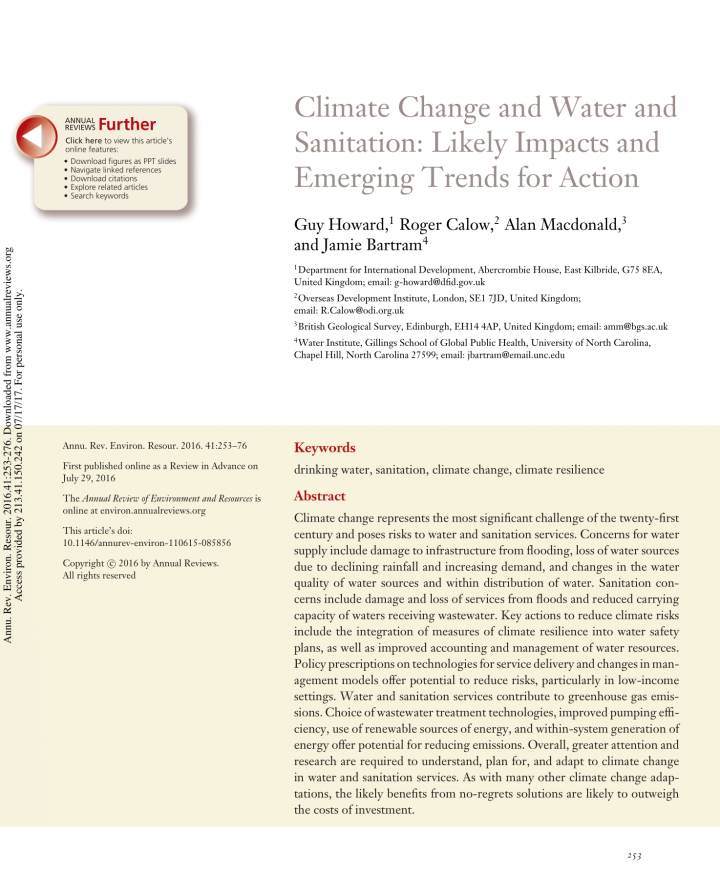Searching for information on Sanitation Workers?
The Sanitation Workers Knowledge + Learning Hub is the best source for all current news, trends, articles and updates on sanitation workers rights around the world.
Sanitation workers provide an essential public service to reach Sustainable Development Goal 6.2, but often at the cost of their dignity, safety, health, and living conditions. A key barrier to providing support for this profession is the insufficient data on sanitation workers and their work environment. As such, the aim of this assessment was to explore opportunities to support sanitation …
The purpose of this book is to increase the effectiveness of relief works in providing humanitarian assistance during an emergency. To achieve this purpose, the book provides practical information relevant to the field workers, with a minimum of supporting theoretical background. The book does not aim to set out specific policy guidelines relating to humanitarian assistance- each agency will have …
This facilitator's guide is one of the three components of the WASH Governance Training Programme, which aims to help capacity builders, facilitators and trainers to support the WASH sector in African countries. The other components are a set of training modules and a WASH Wall Chart package with a set of interactive labels.
The facilitator's guide provides an overview of the entire programme; …
Kafue District is one the six districts serviced by LWSC and Kafue Town, the area of interest in this study, is in this district. The town is located about 45 km south of Lusaka City, the nation’s capital. It is located on the northern bank of the Kafue River, whose water is the major source of water supply for Chilanga District, Lusaka City and Kafue Town itself. The population of Kafue Town …
This SWA Briefing Paper explores actions that can be taken by SWA partners that will improve gender equality in all aspects of their work.
While there has been significant progress over the last few decades, gender inequality continues to be one of the most pervasive human rights violations throughout the world. Despite considerable attention and commitment, including through the SDGs’ …
A guideline based on the Swiss Re 2007 award winning pilot project “Water harvesting to improve livelihoods in southern Ethiopia: from pilots to mainstream” and large-scale implementation of sand dams in Kenya.
In the Kituï District of Kenya the SASOL (Sahelian Solutions) Foundation began constructing sand storage dams in 1995. Since this period, over 500 sand storage dams have been …
A VLOM pump is one which can be operated and sustained using Village Level Operation and Maintenance. The term VLOMM is also used, meaning Village Level Operation and Management of Maintenance. This addition emphasizes the role of users as the managers of maintenance – they may choose to use someone from outside the village to assist with more complicated repairs. Not all maintenance and repair …
These guidelines outline a step-by-step process for Red Cross Red Crescent staff and volunteers to plan and implement effective, context appropriate hygiene promotion, without taking shortcuts or delivering ‘hygiene messages’. The guidelines provide National Societies with a standard approach for quality assurance, and an opportunity for more effective training and monitoring.
This document contains three sources of information: a literature review, a set of interviews with key informants, and a set of case studies. The focus of this document is on situations where long-term or chronic problems of inadequate access to safe water/sanitation, coupled with poor hygiene practices, expose people to health risks. It also focuses on situations where a water pollution incident …
This study took place between October 2017 and March 2018 and was led by CSOs in 25 countries under the umbrella of End Water Poverty, Watershed Consortium, Coalition Eau and the Water Supply and Sanitation Collaborative Council (WSSCC). Organisations agreed to conduct an in-depth inclusive analysis on country-level accountability mechanisms towards SDG6 on clean water and sanitation …
Safe collection and safe disposal of fecal sludge is a critical component of septage management in which desludging operators play a central role. In order to understand their work, consultations were conducted with desludging operators in the Periyanaicken Palayam and Narasimhanaicken Palayam town panchayats of Coimbatore district. These consultations aimed to understand the current desludging …
In rural Viet Nam, 20 per cent of the population still do not have access to basic drinking water services, leading to leaving children vulnerable to diarrhoea, dysentery, typhoid and other water-borne diseases. Following Cambodia’s example, Viet Nam has invested in the production and distribution of ceramic filters to address the issue of water access, particularly in the rural areas. Led by …
This Sanitary Survey Checklist Guide provides a methodical way to identify the factors or features of the existing school WASH system that contribute to an increased risk to the health of school children and teachers. It should be possible for the school community, with a assistance from the facilitator and possibly a health inspector, to answer the checklist questions and see the weaknesses and …
A school bag (representing Guddi’s dream) and earthen water pot (representing Guddi’s life) are in conversation about who is more important in Guddi’s life – the bag or the water pot. The school bag blames the water pot saying that Guddi’s dream was to go to school and be a doctor, but she had to choose life instead of her dream. The water pot says it is because of deforestation that …
There is growing attention to addressing the menstrual hygiene management (MHM) needs of the over 21 million displaced adolescent girls and women globally. Current approaches to MHM-related humanitarian programming often prioritize the provision of menstrual materials and information. However, a critical component of an MHM response includes the construction and maintenance of water, sanitation …
Gia Nghia is a small but quickly growing and urbanising town. 87% of households have water supply provided on premises with projects underway to bring this to over 90%, and 100% of the population has access to a sanitation system (no open defecation is reported). Waste stabilisation ponds were constructed to treat wastewater, but these are not operational due to a lack of connections to the sewer …
Abstract
Innovators in the water and sanitation sector are focused on closing the sanitation gap in developing countries through innovation in technologies that enable waste treatment onsite. To ensure universal access, these technologies need to meet the practices and preferences of different genders. This paper uses an online survey and follow-up telephone interviews with technology developers …
Pour mettre à l’échelle des mesures d’approvisionnement en eau et d’assainissement dans les zones urbaines à faible revenu il faut appliquer la bonne formule. Le Cube Magique (MajiCube) avec ses six faces, considère les éléments suivants: le cadre sectoriel, les acteurs de mise en œuvre, les systèmes d’information, le financement, l’accès a l’eau et la chaine …
According to RPJMN 2020–20241 figures, in 2018 almost 75 percent of the Indonesian population has access to improved sanitation nationally. This includes almost 7.5 percent classified as safely managed sanitation services based on Sustainable Development Goals (SDGs) 2030 definitions. These figures are impressive considering the low base of sanitation coverage with which the country has been …
The principles and practice of water safety planning are increasingly being adopted around the world as the basis for the provision of safe and clean drinking-water. This process is most pronounced in urban conglomerates where the institutional infrastructure of municipal corporations, parastatal enterprises or private utilities is conducive to their adoption.
Water safety planning has a …
Climate change represents the most significant challenge of the twenty-first century and poses risks to water and sanitation services. Concerns for water supply include damage to infrastructure from flooding, loss of water sources due to declining rainfall and increasing demand, and changes in the water quality of water sources and within distribution of water. Sanitation concerns include damage …

